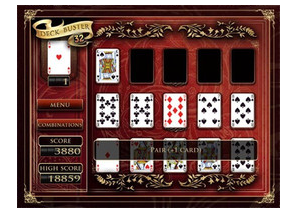I’ve been playing Sid Sackson’s seminal classic Can’t Stop the last few days, in its new iPad form. Although I’d (shamefully) never played it until now, simply hearing it described was enough for it to serve as partial inspiration for my own Picnic Blitz, as some reviewers have noticed.
Although I found the AI a challenge for my first few attempts, I learned quickly and, as is often the case with board game AIs, was soon able to defeat it a large majority of the time in one-on-one games. Its biggest weakness, I’ve observed, is that it does not to give enough (or perhaps any, it is hard to tell) consideration to the likelihood that you will be able to win on your next move. It will make an otherwise-sensible preparatory move to improve its odds of completing a column on its next move, without realizing that it isn’t likely to get a next move, and should instead shoot for a win immediately, even if the odds of success are small.
The choice between attempting to win on one’s current move or instead building up power to try to win on a subsequent move is a common dilemma in games; it’s embodied in a very pure form in Can’t Stop (and other press-your-luck dice games such as Nada), but it occurs frequently in other games in a more complex, harder-to-quantify way; deciding when to stop building units and launch a final assault in a military game, or whether to call an opponent’s all-in in poker vs. folding and trying to find a better spot, or when to change gears from building power to going all-out for victory points in many Euro games.
(more…)

